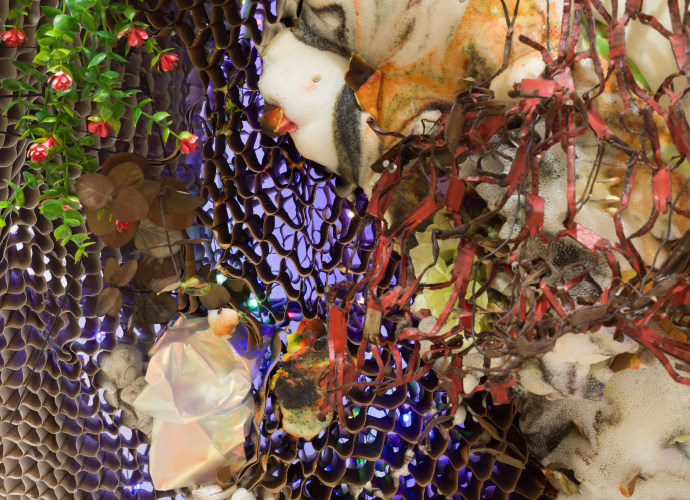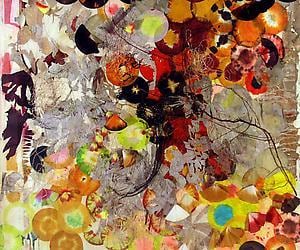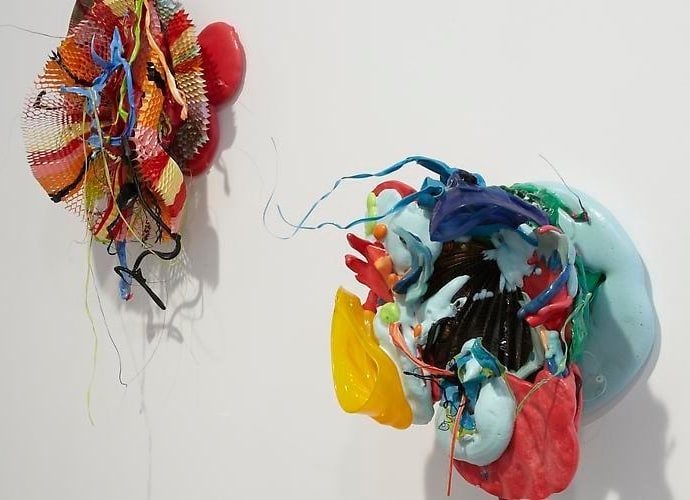
Judy Pfaff
ARTnews
April 2009

Judy Pfaff, who once wowed the art world with her formally and spatially inventive installation art, has recently turned her attention to paper. Her newest pieces, shown here, exist in box-like metal frames defining a narrow band of space—maybe five inches deep. Viewers should not let the works’ apparent flowery “decorativeness” dissuade them from inspecting all that is happening within this shallow space. Pfaff still has an uncanny grasp of spatial complexities. The details in these works provide sustenance for eyes starved of unabashed beauty. It’s as if she were compressing a gallery’s worth of glorious installation art into a confined space. Pfaff does it all with paper—stained, cut, folded, torn, drawn on, and pieced together like petals, black on one side and acid green on the other. She does it with coffee filters: vivid color–stained circular shapes that are sometimes flattened out and other times folded or quartered. She does it with tangles of transparent cord, black string, and red wire, layers of artificial flowers, printed flowers, cut-out flowers, and black twisty links of burned paper, along with actual leaves and twigs, fishing bobs and lures, snap lines, origami hats and boats, and starbursts that turn out to be umbrella spokes. Pfaff has long been interested in Asia. She uses Tibetan ledger paper, Chinese joss paper, and Crown Kozo paper, as well as file folders, burned paper, perforated paper, aluminum foil, and music sheets. To dismiss her new intricate works—the bright cheery ones and the dark somber ones—as “decorative” is not to understand that such distinctions don’t apply in Asia, and not to realize that Pfaff’s formal fluidity is as stunning as her spatial resilience. Think of these intricate paper improvisations as cosmic landscapes. - Kim Levin
